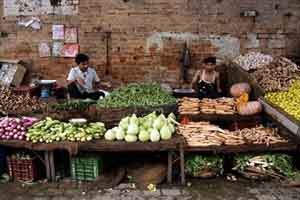The government has changed the base year for calculating consumer price inflation to 2012 from 2010 to better gauge price situation in the economy and will issue the first monthly estimate of retail inflation using the new series on Thursday.
The move is being closely tracked by analysts for some signals in the economy, given that the Central Statistics Office’s (CSO’s) recent upward revision of growth sharply caused some unease among economists.
The CSO has been releasing inflation data based on the Consumer Price Indices (CPI) for three categories since January 2012—rural, urban and combined. While the weight of non-core items such as food and beverages and fuels items has been reduced, that of housing, clothing and miscellaneous items has been raised in the new series.
The CSO had on January 30 changed the base year as well as methodology for computing national income and on Tuesday, and estimated economic growth for 2014-15 at 7.4%, much higher than any projections earlier that used the old series, including 5.5% by the RBI. The new estimates had also revised up sharply the growth rates for 2012-13 and 2013-14 to 5.1% and 6.9%, respectively, from 4.5% and 4.7% reported earlier. This stoked a debate on whether the country could actually achieve such high growth rates, especially in 2013-14, when some of the important indicators pointed at a different picture of the economy. The CSO had, however, strongly defended the revisions.
In the new CPI series, the weight of food and beverages would be 45.86 in the 2012 series, against 47.58 in 2010 series for the national index.
Similarly, the weight of fuel and light segment would be 6.84 in the 2012 series against 9.49 in the 2010 series and that of clothing and footware segment would be increased to 6.53 from 4.73 while housing will have a weight of 10.07 instead of 9.77. The weight of pan, tobacco and intoxicants would be raised to 2.38 from 2.13. Miscellaneous items would have a weight of 28.32, up from 26.31.
The number of items in the CPI basket has been raised to 448 from 437 in rural and 460 from 450 in urban and at all India levels. In the revised series, 11 new priced items have been added, without dropping any item, in rural sector at all-India level. In case of urban, 7 priced items have been dropped and 17 new priced items have been added.
Moreover, prices of food items under the Antyodaya Anna Yojanna have also been included in the new series, in addition to the earlier practice of using the price data for supplies to people above as well as below the poverty lines.

